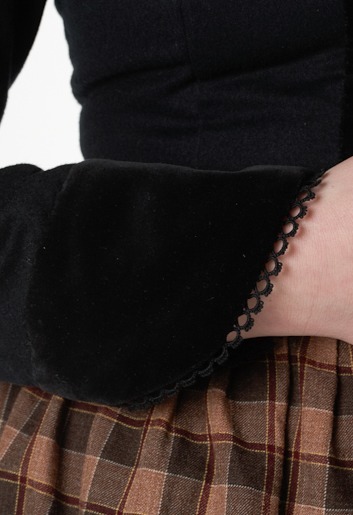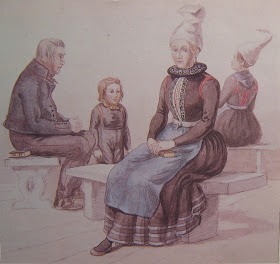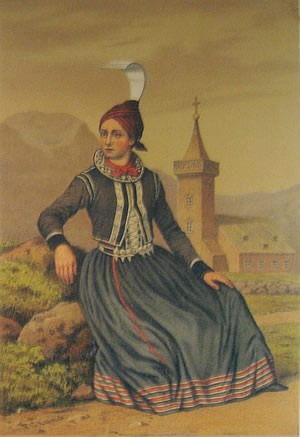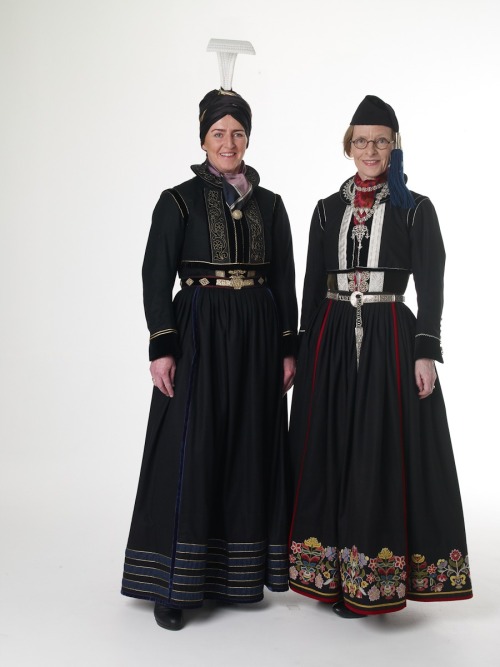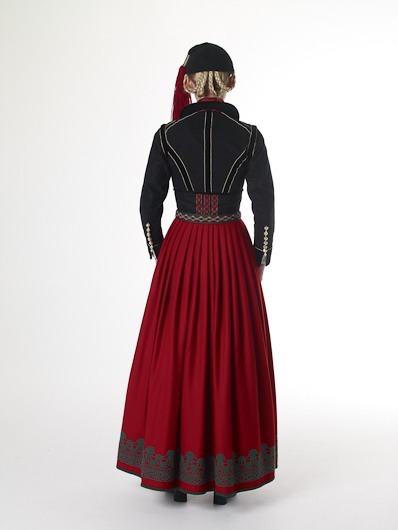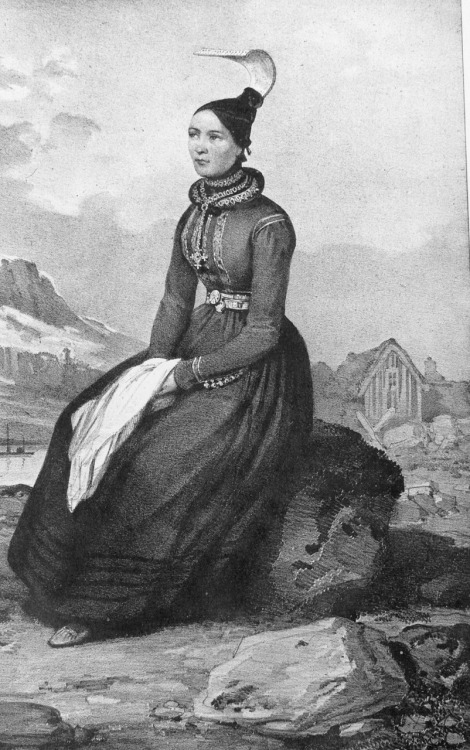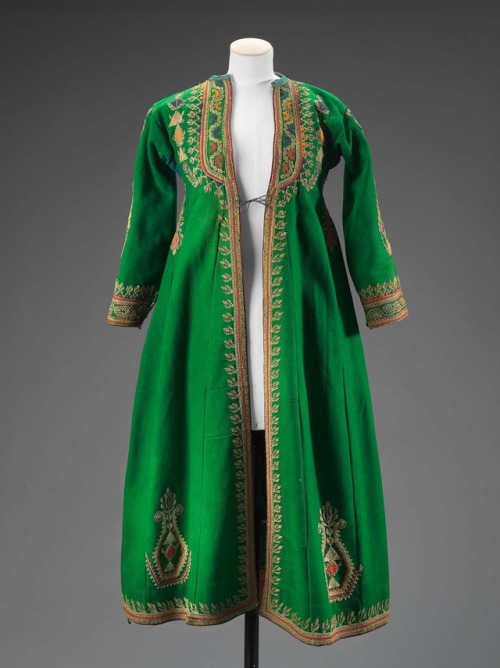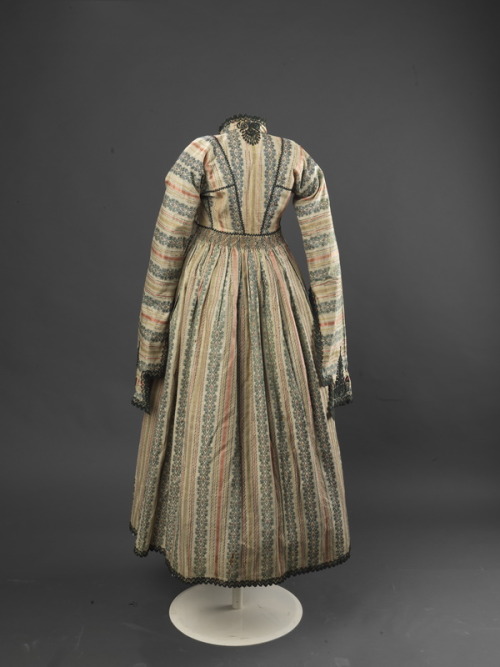#non western fashion
Skautbúningur
The Skautbúningur was designed by Sigurður Guðmundsson in the 19th century around 1858-1860’s. It was conceived as a modernized variation of the faldbúningur, which had fallen out of use by the middle of the 19th century. It incorporates a complicated hat inspired by the ones traditionally used with the faldbúningur. | Sources: [x] [x] [x]
Icelandic Folk costumes a request by: Sweet Holy Potato
Post link
The Peysuföt are black woollen clothes commonly worn by women in the 18-19th century. They usually consisted of a twill skirt and a jacket of fine knitted woollen yearn with a black tail cap. It is believed that this costume was invented when women, desiring simpler working clothes than the faldbúningur, started to use male articles of clothing. This includes both the tail-cap and the peysa which originally was a jacket with a single row of buttons, but evolved into this costume and eventually discarded with the buttons. | Sources: [x] [x] [x]
Icelandic Folk costumes a request by: Sweet Holy Potato
Post link
The Faldbúningur is an older type of costume worn by women since at least the 17th century and well into the 19th. In its most recognized form it incorporated a hat decorated with a curved sheet-like ornament protruding into the air and exists in two variants. One of which is the krókfaldur (the hat in the first image.) and the other is the spaðafaldur (hat in the last four images.). Previously a large hat decorated with gold-wire bands was worn with it, as well as ruff which is the reason for the faldbúningur’s wide collar, which was designed to support it. Later, around the start of the 18th century women started to wear the much simpler tail-cap with it.[Wikipedia] | Sources: [x] [x] [x]
Icelandic Folk costumes a request by: Sweet Holy Potato
Post link
Upphlutur 19th Century
The Upphlutur is a woman’s costume, consisting of bodice that can be coloured in bright colours such as red or blue, but often black. Its headpiece is a tail cap. The costume is basically the undergarment of the faldbúningur which evolved into a costume of its own right.
One of the main points of this costume is that it made for ease of movement, it was easy to work in. | Sources: [x] [x] [x]
Icelandic Folk costumes a request by: Sweet Holy Potato
Post link
In the 19th century costumes were more restricted than had been. Unlike in the 18th Century were woman wore a krókfaldur (a type of hat.) which you can see here . In the 19th century the headdress had become flat. This variant was called the spaðafaldur. | Sources: [x] [x] [x]
Icelandic Folk costumes a request by: Sweet Holy Potato
Post link
Faldbúningur 18th Century
Faldbúningur is the oldest form of Icelandic folk costume, and had gone out of use by around 1850, but has been to some extent revived today. It was also the starting point for most of the other forms. It is characterized by a large white headpiece that curves forward. This was called the krókfaldur.
In the mid to latter 18th cent, the high headdress began to be replaced by a stocking cap with a large tube and tassel (tail cap), which was adapted from the men’s costume. | Sources: [x] [x] [x]
Icelandic Folk costumes a request by: Sweet Holy Potato
Post link
Icelandic Folk Costumes
Íslenski Þjóðbúningurinn is the name for the national or folk costumes of Iceland, you will notice that buningur is from the same root as the Norwegian bunad. To help you pronounce this, the first letter is called ‘thorn’, and is pronounced like th in thin, the fourth letter is pronounced like th in this. Old English had these letters and then gave them up.
The five following types of costume are all recognized as Icelandic National costumes. However both the kyrtill and skautbúningur were designed in the 18th century from scratch as ceremonial costumes, while the faldbúningur, peysuföt and the upphlutur are traditional daily wear of Icelandic women in olden times.
• Faldbúningur
• Upphlutur
• Peysuföt
• Skautbúningur
• Kyrtill
Icelandic Folk costumes a request by: Sweet Holy Potato
Post link
Icelandic woman in the 18th century faldbúningur with the spaðafaldur cap.
Icelandic Folk costumes a request by: Sweet Holy Potato
Post link
Emperor’s Ceremonial Armour
1736-1795 (Qianlong period). Silk, bronze, gold, metal and cotton.
The Qing rulers, conquerors of all China, took pride in their military heritage. Emperor Qianlong carried out great military reviews, some in the imperial grounds south of Beijing. The emperor inspected his troops regularly. His ceremonial armour was for such events, not for battle. The jacket and apron are padded with cotton instead of protective iron strips. The sleeves are banded in closely sewn strips of gold thread to resemble shining metal. | sources: V&Aand The Palace Museum, Beijing.
(top image: Painting of Emperor Qianlong wearing ceremonial armour, 1758.)
Post link
Festival Dress
1800s-1850s
Ioannina, Greece
This small dress tells of a long journey. Originating from the Ionian Jewish community in Northern Greece, it arrived in Kibbutz Afikim by way of Salonika and Paris. Inspired by a style commissioned by Queen Emilia of Greece to reflect the new Greek nationalism, this dress incorporates Greek embroidery and fabrics with a silhouette borrowed from a European ball gown.
The Israel Museum
Post link















